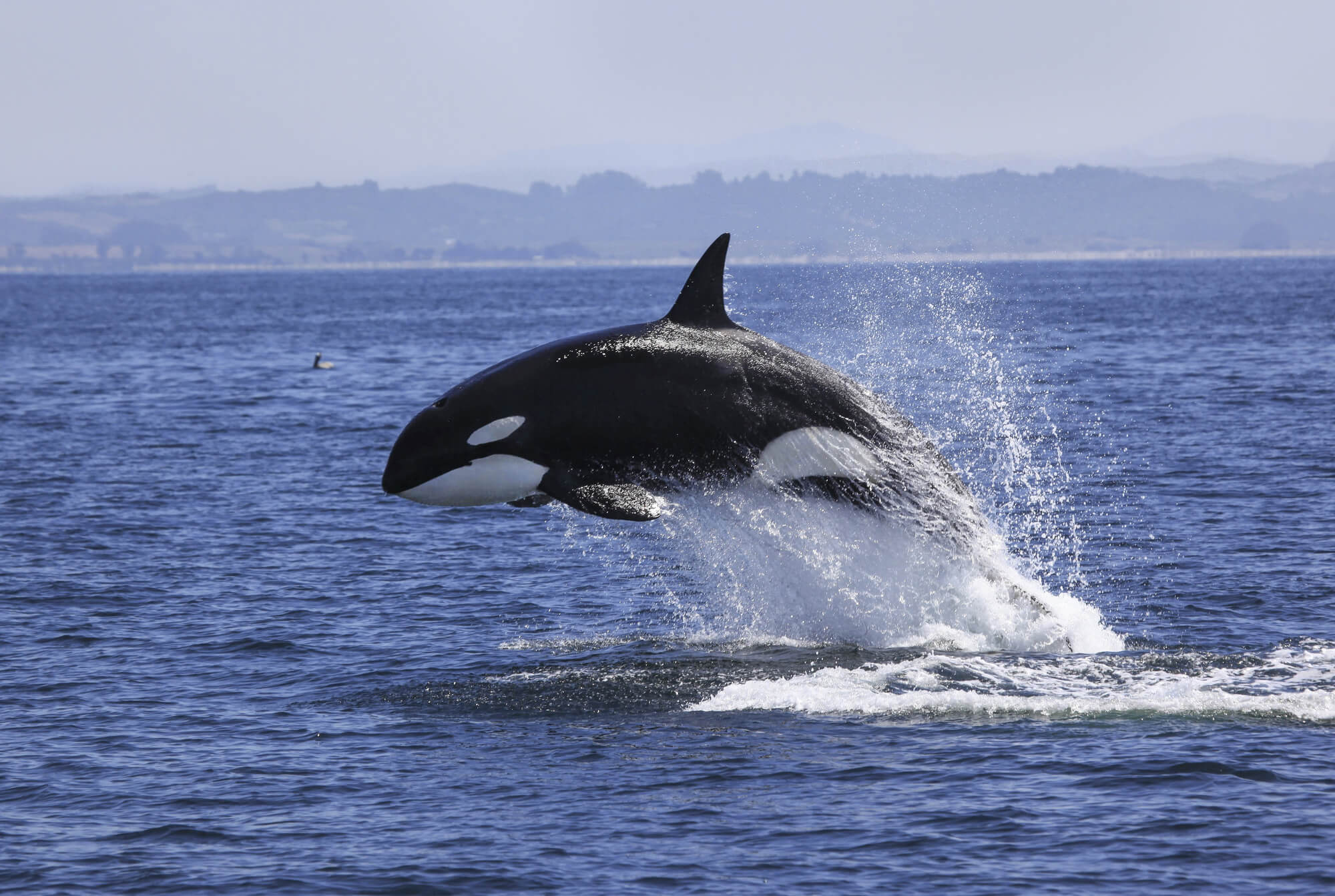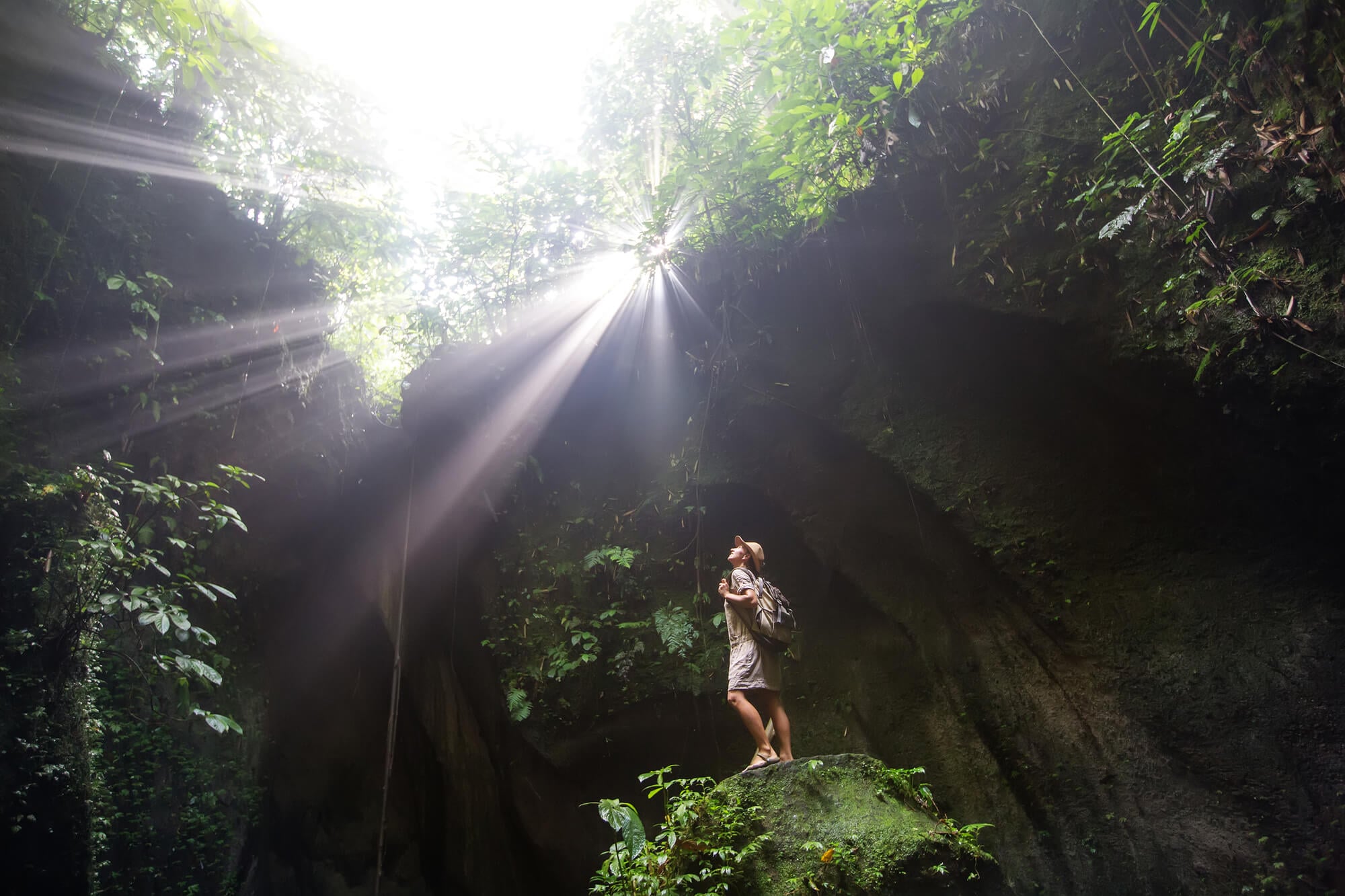Our beautiful planet is filled with incredible plants, animals, and sights to see. In celebration of World Nature Day, we’ve put together this awesome guide to some of the best nature and wildlife experiences for your next vacation.
USA nature vacations
Nature and wildlife in Mexico
Ethical nature vacations in Thailand
Wildlife in Europe
Where to see nature in the USA
The USA is the ultimate vacation destination for wildlife lovers. The country is staggering in its diversity of landscapes and the beautiful creatures that inhabit it. With national parks, swathes of wild forest, and coastal wildlife havens, America is a fantastic place for some once-in-a-lifetime opportunities to see some of the most majestic creatures living wild.
Florida nature vacations
Florida is a firm favorite vacation destination for families looking for a fun time. But it is also a great place to see how humans and animals can coexist and thrive side-by-side. When you want a break from the fun of Disney and the thrills of Universal Studios, there are plenty of places in the Sunshine State where you can get to know some of Florida’s most famous residents.
Florida Everglades National Park
Florida wildlife is notable for being extremely diverse. There are species living in the state which are rarely seen anywhere else! The reptilian star of the show is the Florida alligator. It’s not hard to see them, as they inhabit bodies of water all over the state. The most iconic place to see them is in the Florida Everglades National Park, where you can get up close and personal with them on an airboat tour. Airboat tours are a fantastic eco-friendly way to explore the Everglades. Unlike propeller-driven boats, they have no machinery beneath the water, which means that they pose no threat to animals swimming beneath them.
The Florida Everglades is also a fantastic place for birders. Beautiful Florida water birds including wood storks and herons are often spotted wading through the murky waters, looking for fish dinner. If you’re very lucky, you might even see one of Florida’s rarest and most elusive animal residents; the Florida Panther. This beautiful big cat is the only cougar species currently breeding in the Eastern part of America and is the state animal of Florida. Of course, one of Florida’s most famous animal inhabitants is the notorious gator. If you want to come face-to-face with these scaly residents on your Florida vacation, check out our guide to gators and other awesome reptiles that you can see on vacations around the world.
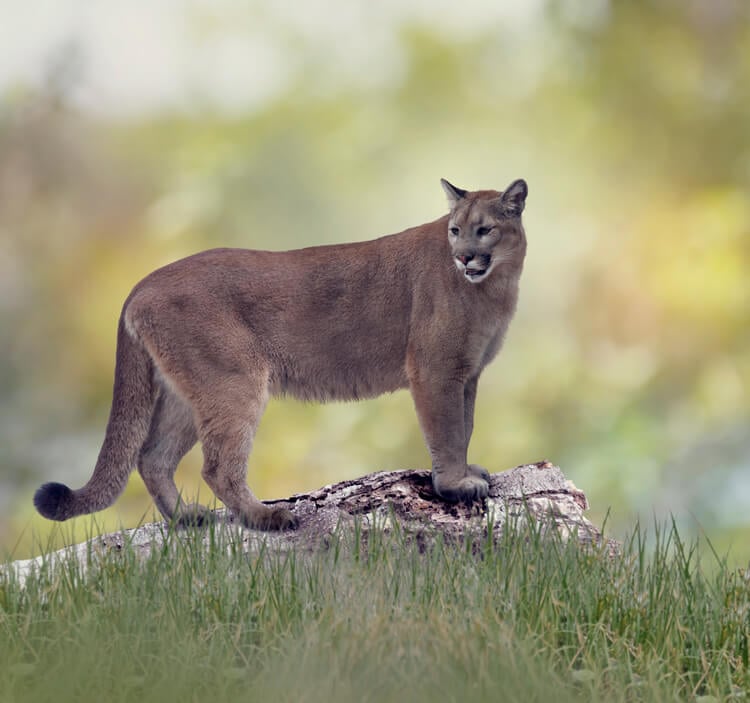
Visiting the Florida Everglades
One of the key things to remember about the Everglades National Park is that Florida has two distinct seasons, the wet and the dry season. The dry season is the busiest time of year and runs from November to March. It’s not just people who flock to the Everglades in the dry season; it’s the busiest time for migratory birds and predators too. The wet season is quieter, so you’ll have more space to yourself in this incredible natural wonder. However, you will have bugs for the company! Insects are drawn to the soggy conditions in the park, so make sure that you pack clothing that covers your arms and legs. Florida Everglades weather can be wet and unpredictable, and many birds like that even less than we do – so double-check the weather predictions before your trip to get the most out of your day.
For extra insight, you can opt to join a Florida Everglades tour ranger-led program. An expert guide will show you how and where to spot the park’s wildlife and tell you all about the work that is being done to protect this remarkable location.
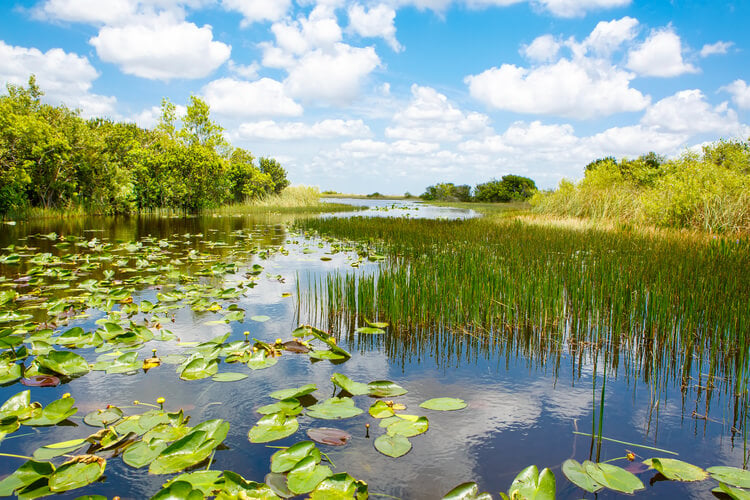
Other State Parks in Florida
It might be the most famous, but the Everglades National Park is not the only place in Florida to get your wildlife fix. Myakka River State Park is an amazing place to get back to nature on your Florida vacation. Visitors can spend their days cycling, kayaking, birding, and geo-seeking. You can even arrange to camp in the park. A fun way to test your knowledge and learn how to identify different bird species is with the Wings Over Florida project.
Where to see manatees in Florida
Manatees are one of the most enigmatic of Florida’s animals. These gentle giants can weigh up to a whopping 1200 lbs and live to 60 years old. Florida is one of the few places on Earth you can see them, as the warm waters of the state are perfect for ‘sea cows’ as they’re sometimes called, to thrive.
One of the very best places to see manatees in Florida is at Blue Spring State Park. Up to 500 manatees congregate here in the winter months to feed and give birth to their young. Observing these adorable roly-poly animals from a distance is the best way for both them and you to have an enjoyable experience. The park runs a Manatee Observer Program to ensure that the animals are undisturbed by visitors to the park. It’s also a great place for reintroducing rehabilitated manatees into the wild, where they can be observed and monitored by dedicated staff. Find out more about how to see manatees in Florida in our handy guide to seeing these gentle aquatic giants.
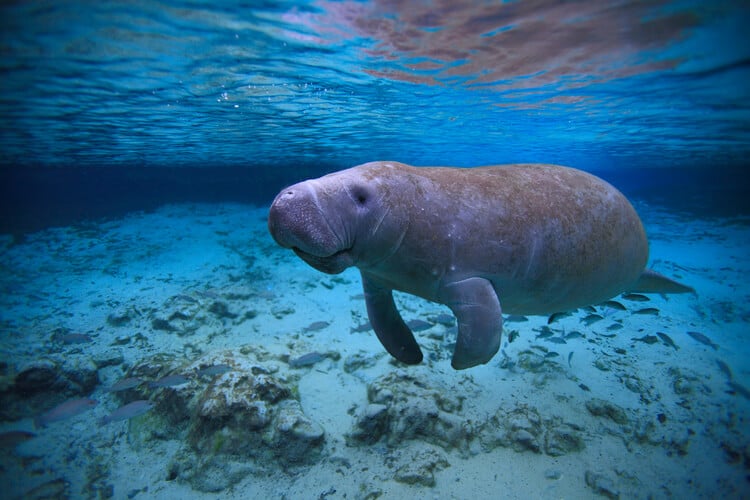
How to see California wildlife
Over on the sunny West Coast, sea life is the star of the show. A wildlife safari in California might include sightings of some majestic ocean goers, including whales, dolphins, sharks, and sea lions.
Whale watching in California
The west coast of America is lapped by the warm waters of the Pacific Ocean and is a haven for marine life. One of the biggest draws for nature lovers in California is the whales. California Grey Whales migrate past California every year on their way from their Arctic feeding grounds to Mexico. They start their immense journey in October, passing San Diego from December to March. Another marine resident off the coast of San Diego is dolphins. There’s nothing better than seeing the most delightful animal frolicking wild and free through the waves of the Pacific Ocean. Species to look out for include the Pacific White-Sided Dolphin, Bottlenose Dolphins, and Risso’s Dolphins.
There are many ethical tours to see the whale migration in California that you can take from San Diego. Many companies depend on these beautiful animals for their payday, so work hard to ensure that the experience is as great for the whales as it is for tourists. If you’re unsure about which tours are the most eco-friendly, look out for companies that prioritize terms such as ‘education’ and ‘conservation’ in their adverts. San Diego Whale Watch is one of the oldest and most respected marine education companies in San Diego. Along with whale-watching excursions, they organize beach clean-ups and educational sessions to protect the marine environment. If you want to discover the very best places and times to see mighty wild whales in the Golden State, check out our comprehensive guide to whale watching in California.
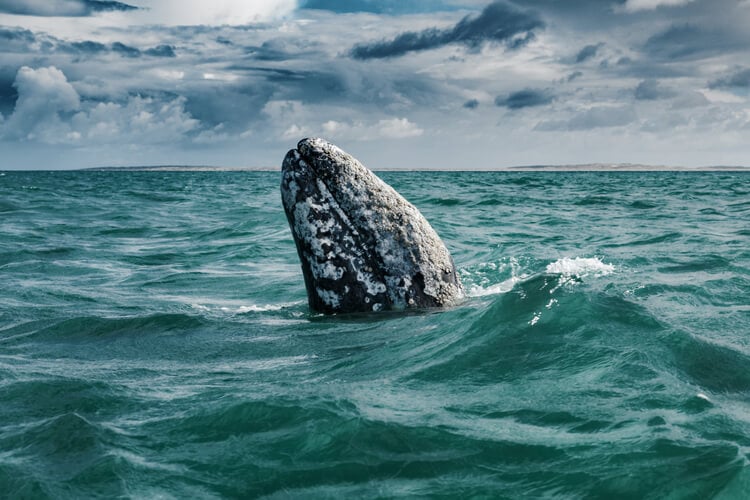
Seals and sea lions in California
One of the most famous marine residents of the Golden State is the California Sea Lion. These playful, dog-like creatures can be seen lazing on beaches all along the coast. La Jolla Beach is a favorite haunt for sea lions in San Diego. The sea lions can be seen from the beach and coastal walks. You can also hire a kayak or stand-up paddleboards to get closer.
If that wasn’t enough, California is also home to another blubbery resident. Between Los Angeles and San Francisco lies Elephant Seal Beach. No prizes for guessing what lives there! Seeing the elephant seals in California is the cherry on top of a wildlife lover’s cake. You can’t go onto the beach itself, for the safety of the seals and the people, but you still have plenty of opportunities to admire them from a distance. Check out the Friends Of The Elephant Seals for more information about how to plan your visit.
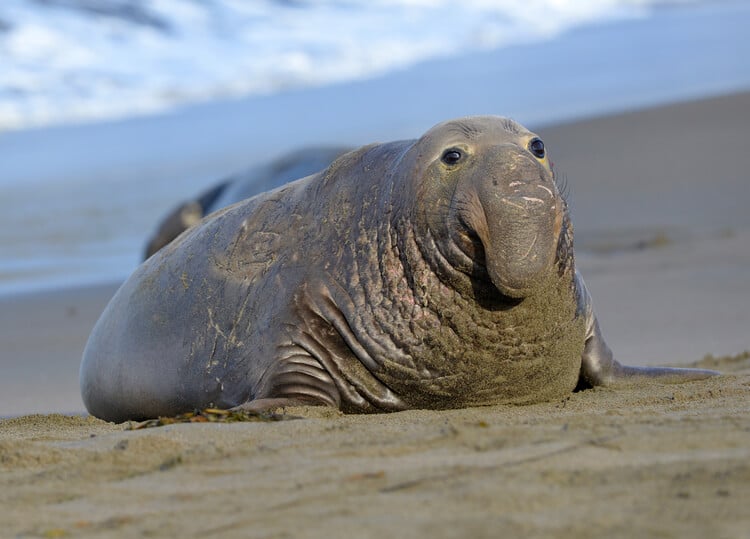
California National Parks
It’s not all about life below the waves; California is home to some stunning land-based natural wonders too. A visit to Yellowstone National Park is a must-do for nature fans, with breathtaking views and the chance to spot some Yellowstone wolves. Visit in the winter for the best chance of seeing wolves roaming the landscape. If you’re a fan of our feathered friends, take a trip to Merced National Wildlife Refuge. You can see migratory birds in their thousands. The refuge’s croplands are maintained to provide the perfect nesting grounds for tens of thousands of snow geese. January is peak goose season. It’s the best time to visit for the unforgettable sight (and sound) of thousands of happily honking geese.
California butterflies
California is the sight of another of nature’s great migrations. From mid-October to February each year, beautiful Monarch butterflies visit California. They stop to mate and gather in basketball-sized clumps on trees. As daytime temperatures rise, you can see them doing a spiral mating flight, and the air is filled with flashes of orange and black wings. Seeing monarch butterflies in California is all about timing. They will not fly if the temperature is below 57F, or cloudy, so check the weather predictions before you set off! They usually fly between noon and 3 pm. Pismo State Beach is a fantastic place to see them in action. It boasts the highest concentration of butterflies anywhere in California.
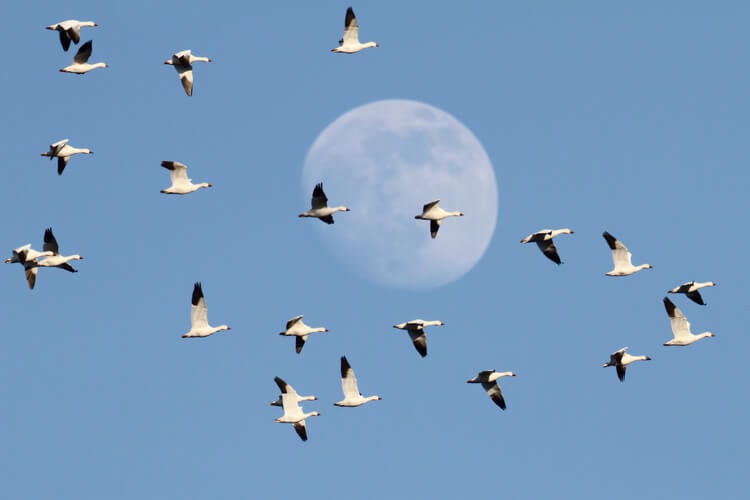
Nature vacations in Mexico
Mexico is a legendary vacation destination for so many reasons; incredible history, beautiful beaches, and fabulous food are just a few of them. But right near the top of any list of reasons to visit is Mexican wildlife.
Mexico is home to some unique species, the strangest and arguably cutest of these is the enigmatic axolotl. These quirky characters were recently rediscovered by scientists, after being previously feared extinct in the wild. They only live in Lake Xochimilco, near Mexico City. Although you’re unlikely to see an axolotl in the wild, the lake is a fabulous destination for nature lovers. It is home to half of all Mexico’s migratory bird species, as well as amphibian and reptile species.

Whale sharks in Mexico, and other marine life
Another of Mexico’s most famous seasonal residents is the biggest fish in the sea; the magnificent whale shark. These gentle giants are harmless plankton eaters and can be seen in the Sea of Cortez between October and May. Whale shark season in the Yucatan Peninsula lasts from June to September. It is possible to book an expedition to see whale sharks. Mexican authorities have started limiting the number of boats allowed out each day to protect the sharks.
These beautiful animals are endangered in the wild, so it’s crucial to work with guides and companies who have the shark’s best interests in mind at all times. Every year in July, Isla Mujer holds a whale shark festival, dedicated to the understanding and protection of Mexico’s favorite fishy visitor. Other shark species that hang out in the waters around Mexico include the Hammerhead Shark, Oceanic Whitetip Shark, Thresher Sharks, and Tiger Sharks.
Another underwater marvel for nature lovers is the whales in the Gulf of Mexico. Fin whales, sperm whales, humpback whales, and orcas can all be seen in the warm waters. Seeing them in the wild is an experience that cannot be beaten.
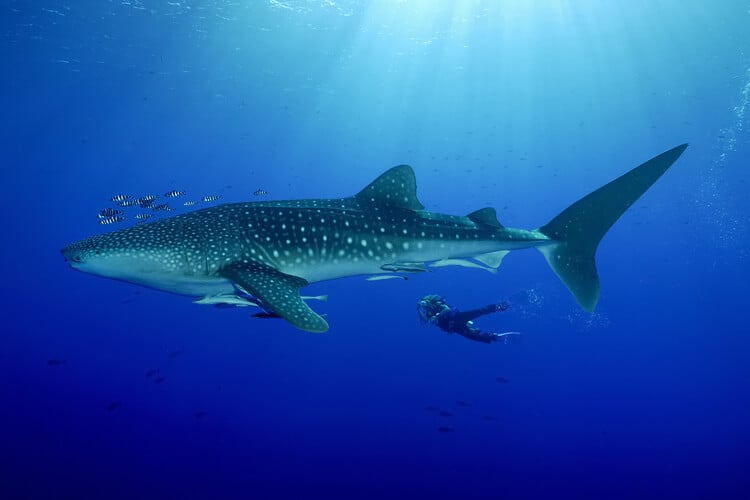
Monarch butterflies in Mexico
In case you missed them in California, Monarch butterflies end their great migration in the winter warmth of Mexico. They begin to arrive in mid-November, but their numbers are greatest at the end of January. They’re also at their liveliest then, as the temperatures are warmer. You can see them in Mexican butterfly sanctuaries, such as the UNESCO Heritage site at Michoacan.
Cenotes in the Yucatan Peninsula
Cenotes are magical underwater wonderlands, unique to Mexico. These incredible caves are a natural and geological marvel; a vast network of sinkholes filled with water from beneath the Earth’s surface. There are over 3000 cenotes in the Yucatan Peninsula, mostly in the area covered by the Chicxulub asteroid crater. Historically, Mayans believed that cenotes were portals to the underworld. Many have even been found with the remains of offerings to the Gods from ancient rituals.
You can visit cenotes pretty easily. Many are free, although some are privately owned and incur an entry fee. Cenotes are a big draw for divers, but if you fancy suiting up for a little underground adventure, ensure that you have done your research first, and go with an experienced guide.
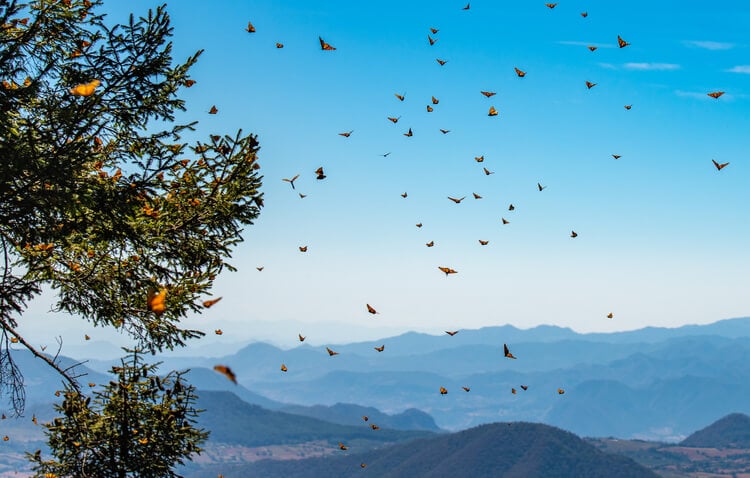
Ethical nature vacations in Thailand
Thailand is a country of stunning contrasts. Vibrant, exciting cities sit alongside dense, tropical rainforests, while the coast is fringed with pristine beaches. Below the surface of the crystal clear water are colorful reefs teeming with life.
Elephants in Thailand
When you think of a nature vacation in Thailand, one word likely springs to mind; elephants. These majestic gentle giants have long been a magnet for nature fans and tourists to the country, keen to get up close and personal with one of the planet’s biggest residents. As a result of this, a rather unflattering spotlight has recently been shone on some practices involving captive elephants in Thailand. A particular focus has been on the damages of riding them. This has, thankfully, led to a much positive change and awareness surrounding animal tourism in the country. Is it still possible to see Thailand’s elephants in an ethical way?
The answer is yes! The country has worked hard to reframe its relationship with elephants in the past decade. Several kind and conscious sanctuaries and refuges have opened, where education and conservation are at the heart of the operation. A highly rated ethical elephant sanctuary in Thailand is in Phuket. Simply called Phuket Elephant Sanctuary, it is a haven for animals who have spent their lives in the tourism or logging industries. The sanctuary, which is endorsed by National Geographic and World Animal Protection, offers visitors the chance to see the elephants from a state-of-the-art canopy walkway. You can also book experiences that teach you about the care and well-being of these beautiful creatures. To find out more about eco-conscious vacations and how to protect our amazing planet when your travel, take a look at our guide to all things green in the world of travel.
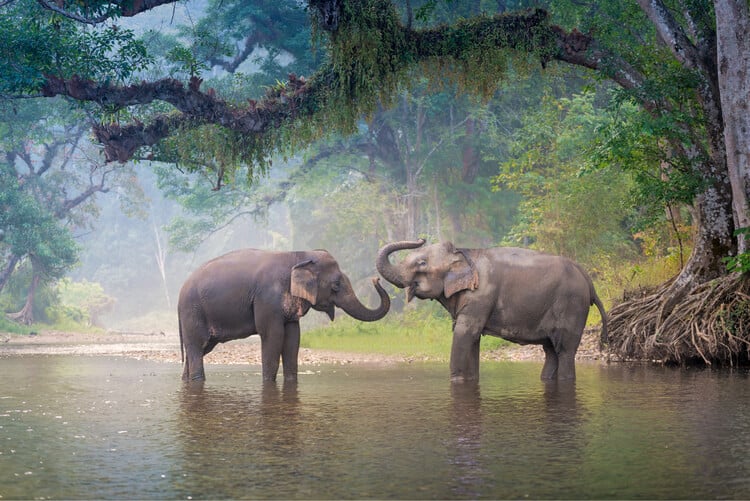
Thailand diving vacations
Life below the waves in Thailand is a wonderland of colorful coral and beautiful marine life. One of the best places for a spot of diving in Thailand is the Phi Phi Islands near Phuket. There are plentiful coral reefs to explore in this iconic region. Taking a dive excursion with an eco-conscious company such as Local Dive Thailand gives you the chance to explore this amazing environment in a sustainable way. See local Thai species, such as the beautiful Black Tip Reef Shark and reef-going fish. There are several species of shark in Thailand, most of them very docile, and it is a treat to see them gliding through their underwater kingdoms.
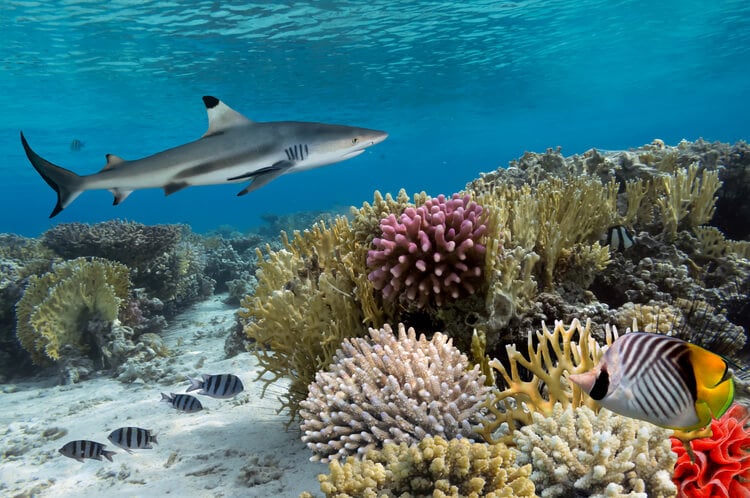
Europe wildlife vacations
Europe is an incredibly vast and varied continent, with a little bit of everything. From high mountains covered in snow, to balmy beaches on the shores of the Aegean Sea, and even the odd desert, Europe is a nature lover’s paradise. Here’s our overview of the best places to see wildlife in Europe.
Wildlife in Spain
Eco wildlife travel in Spain has become a popular vacation style in the last decade. To preserve the natural beauty and fascinating species that call the country home, designated areas and parks have been set up to protect them. One such area is the Donana National Park, in Andalusia. The reserve is one of the most important wetlands areas in Europe. It is home to a huge number of migratory bird species. Scores of geese fly in v-shaped formations across the sunny Spanish sky, while hoards of flamingos color the landscapes in swathes of pink. You can visit the park via one of the numerous visitor centers. You can also take part in an organized tour of the reserve. Keen photographers can join a specialized photography and bird watching tour.
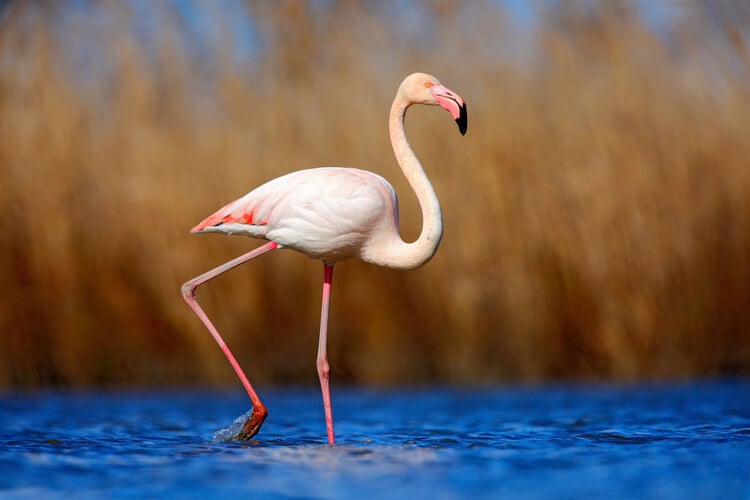
Gibraltar wildlife adventures
Off the southern coast of Spain is the tiny city of Gibraltar. The first thing visitors to Gibraltar notice is the imposing Rock of Gibraltar, which towers over the buildings and sea below. It is an incredible sight, but a trip to Gibraltar has another draw. The narrow sliver of water separating Spain from the North coast of Africa, known as the Strait of Gibraltar, is a veritable highway for traveling cetaceans. Whales and dolphins pass through the strait on their journey between the Mediterranean Sea and the Atlantic Ocean. This makes Gibraltar a fantastic destination for seeing these joyous animals in the wild. Head out onto the waves for the chance to spot Common Dolphins, Bottlenose Dolphins, Pilot Whales, and other species.
There is another famous animal resident in the area. We are, of course, talking about the famous Rock of Gibraltar monkeys. The Barbary macaques, to give them their proper name, are free-roaming primates and a big draw for tourists. Just keep an eye on your belongings. The macaques have gotten used to being fed so have no boundaries about stealing from humans!
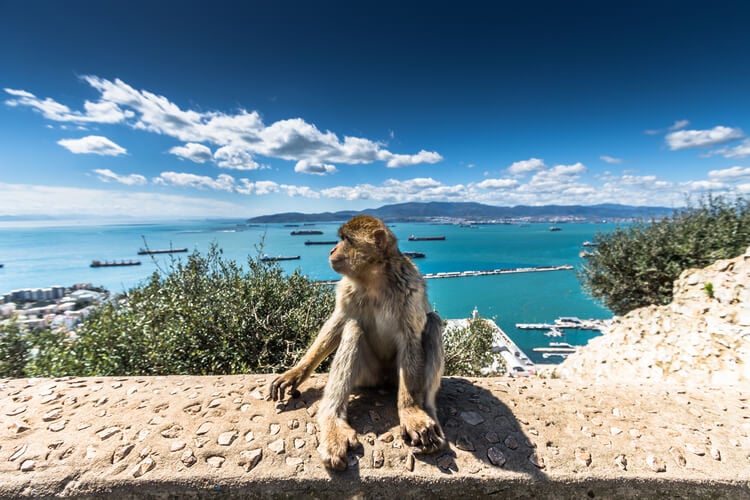
Wildlife in Greece
Greece is a pretty big place. With as many as 6000 islands as well as the mainland, and unexpectedly mountainous regions (you can find out more about the mountains of Greece in our mountain vacation guide) there are plenty of wild and wonderful places to visit on a Greek nature vacation.
Where to see dolphins in Greece
Dolphins play an important role in Greek history and mythology. Look out for mosaics and other artwork featuring them all over the country. They were revered as sacred by the gods Apollo and Aphrodite and were also the messengers of Poseidon.
Luckily, you don’t have to confine your dolphin spotting to the history books. There are 5 species of dolphins (and whales) frolicking in the Aegean Sea around Greece. You can take dedicated trips to try and spot them, but you are as likely to see them on an inter-island ferry. Watch out for Short-Beaked Common Dolphins, Bottlenose Dolphins, Striped dolphins, Cuvier’s Beaked Whales, and Risso’s Dolphins. Between June and September, when the water and weather are warmest is the best time to see them.
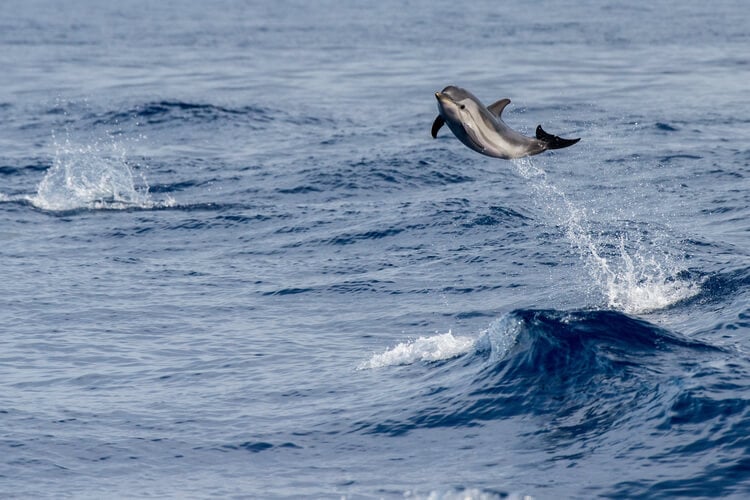
Wildlife Sanctuaries in Greece
Greece is home to many unique and important habitats. Keen birders will enjoy visiting Lake Kerkini (Λίμνη Κερκίνη) on the Greek mainland. It’s an artificial habitat, to provide the birds with somewhere safe to spend a stopover on their journey. Over 300 species of birds migrate through Lake Kerkini on their way to their winter homes. Of these, you’re most likely to see wading birds including herons, egrets, and pelicans, as pretty songbirds such as nightingales. Lake Kerkini is near Greece’s border with Macedonia, about an hour and a half drive from the popular city of Thessaloniki.
For dramatic landscapes in Greece, you can’t do much better than Samaria Gorge National Park (Φαράγγι Σαμαριάς). The gorge, on the popular vacation island Crete, is one of the most celebrated attractions in all of Greece. It’s one of the longest gorges in Europe, and at 16km, it’s not a walk for the faint of heart. The good news is that you can take guided tours to see the highlights of this remarkable terrain. If you are tackling the full walk, visit in Spring or Fall so that you won’t be battling the crowds. You’ll also have milder weather for your expedition. The gorge is open from April to October but might close after heavy rain.
There are plenty of animal residents in Samaria Gorge, the most well-known being the Kri-Kri or Cretan Mountain Goat. These cute little critters are a fantastic example of an animal being perfectly suited to its environment. They skip across the steep, craggy rock faces with ease.
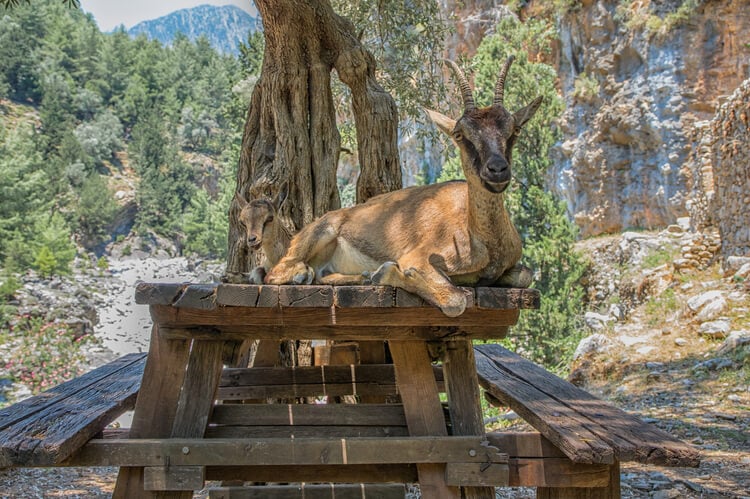
France Wildlife
If you were making a list of reasons to vacation in France, you might include fantastic food, world-class sights, and beautiful cities. You can also add nature to that list. Wildlife in France is varied and interesting. From the chill of Alpine mountains to the warmth of the Mediterranean Sea, there is a huge range of habitat and weather. This creates a fascinating diversity of plants and wildlife.
Are there wolves in France?
Yes! Wolves were reintroduced to France in the early 1990s. They roam wild mainly in the Southern and Eastern regions but have also been spotted in the mountainous Pyrenees. They were once extinct in the wild, but wolves are the comeback kids of European animals. Trained scientists monitor and track the expanding population, which is now around 580 animals. Seeing them in the wild relies on a bit of luck. Your best chance of seeing them is in the forested regions in the east of France.
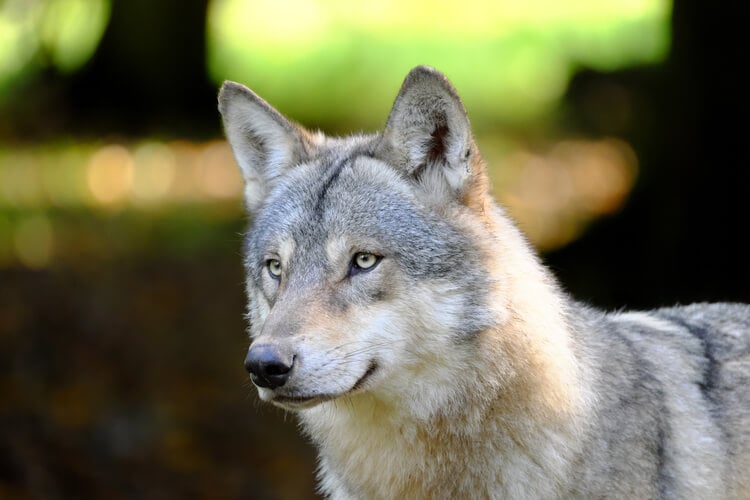
Caribbean nature and wildlife
The Caribbean is not just about sun, sea, and sand. The island chain is also a fantastic vacation destination for nature lovers. Lush rainforests, vibrant coral reefs, and volcanic hills are just some of the diverse Caribbean habitats. Geologically minded travelers can visit some of the magnificent volcanoes in the Caribbean. Saint Lucia is home to a unique volcanic experience; a drive-thru volcano! Mount Soufriere is a boiling, bubbling mound of igneous rock that you can drive your car right into. It’s a unique natural experience that the whole family is sure to love.
Barbados wildlife experiences
Barbados is one of the most popular Caribbean islands for a vacation in paradise. It’s also a haven for nature lovers. The interior of the island is covered in lush rainforests, where you can spot beautiful native birds of Barbados such as white egrets and hummingbirds. Barbados rainforests are also home to Barbados green monkeys. These cheeky characterful creatures live all over Barbados. They are more numerous as you get further from busy towns and cities.
You can explore the island’s interior on a National Trust trail. Walk to some of the most scenic places in Barbados on these designated trails. There are trails for all fitness levels, and it’s a great way to spend a day in the wilder regions of the island. Barbados is famous for its stunning flowers, particularly its impressive number of orchid species. You can see these stunning plants at Orchid World and Tropical Flower Garden. The park, near St George, has glorious displays of orchids and other tropical plants.

Marine wildlife in Barbados
Exploring the underwater world is a big attraction for people vacationing in Barbados. The island is a hotspot for diving, snorkeling, and other water activities which offer people the chance to see the life beneath the waves. Barbados is home to the healthiest reefs in the Caribbean. Local authorities and conservationists work around the clock to ensure that they keep that title. A visit to the reef is a wonderful way to appreciate the beauty and fragility of these important habitats. Commonly sighted on Barbados coral reefs are schools of pretty tropical fish, including angelfish, squirrelfish, and seahorses. Or, you can take a night dive to see some of Barbados’ hidden inhabitants. When the sun goes down, crabs and lobsters emerge from their homes to hunt on the sea bed.
Larger species live in the Caribbean Sea around Barbados as well. Majestic spotted eagle rays and occasionally manta rays can be seen gliding through the water. Rocky reefs are home to slithery inhabitants like moray and gold-spotted eels. Shark sightings are uncommon in Barbados, but occasionally nurse sharks visit the northern shores for a nighttime feeding session. Discover more about the various sharks of the Caribbean in our guide to these beautiful marine creatures.
Turtles in Barbados
Some of the most popular animals in the waters around Barbados are the various turtle species. Gentle hawksbill turtles live on the island all year round. They rarely come on land venturing out to lay their eggs before returning to the water. Leatherback and green turtles have also been seen, although they are less common than hawksbills. Most of Barbados’ turtles are tagged and monitored by the Barbados Sea Turtle Project. The team works hard to protect and educate people about these incredible animals. If you want to get an underwater look at the turtles, check out ‘The Boot’. It’s a popular south coast dive sight that all but guarantees turtle sightings. Companies such as Eco Dive Barbados wear their green credentials on their sleeve and are a great way to explore Barbados’ marine wonderlands without leaving a trace of your visit behind.
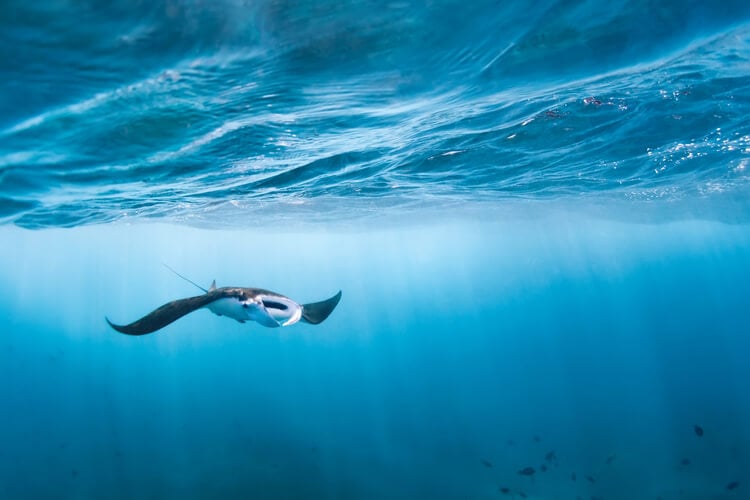
Nature in the Dominican Republic
The Dominican Republic is a real up-and-comer on the Caribbean vacation scene. The island is home to many beautiful natural sights, making it an ideal destination for wildlife lovers. The Dominican Republic is a great place for fans of feathered friends. You can see many beautiful and unusual bird species on your island vacation.
Keep an eye out for the Dominican Republic’s national bird, the palmchat. This small, brown bird may look unassuming, but islanders have rather taken it to their hearts. It is a species of special interest to scientists because it’s something of an enigma; mysteries about how and why it came to live on the island persist to this day. You can see them mainly in the lowland areas of the Dominican Republic but also venture into towns and cities. Other birds of the Dominican Republic include beautiful, dainty hummingbirds, the pretty little narrow-billed tody, and the Hispaniola parakeet.
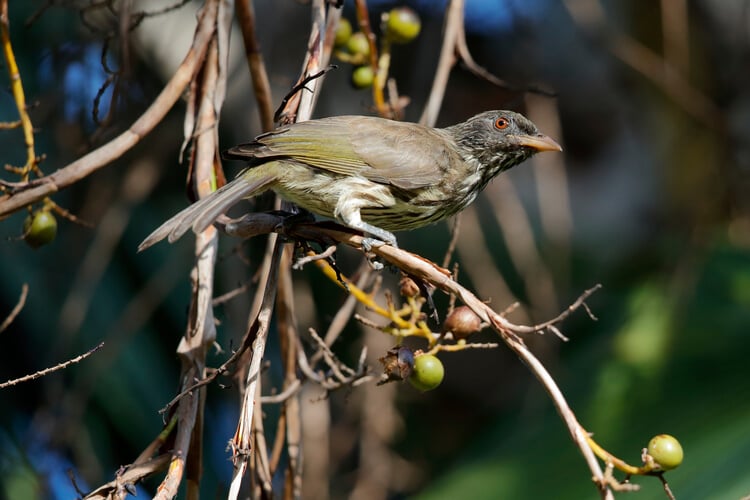
Whales in the Dominican Republic
As with all Caribbean Islands, the marine life around the Dominican Republic is outstanding. It’s a great place to see mighty humpback whales. Between mid-December and late March, as many as 3000 of these majestic cetaceans gather in the warm waters around the islands. The Bay of Semana is rated by the World Wildlife Fund as one of the best places on Earth to see humpback whales. There are many good tours you can take out onto the water to get a closer look. You can also see them from dry land, along with pilot whales and spotted dolphins playing in the surf.
The entire shoreline of the Dominican Republic is protected as a Sanctuary for Marine Mammals. This means that there is a wonderful variety of marine species that you can enjoy in their natural habitats. Take a trip out to Silver Bank to see bottlenose dolphins, athletic spinner dolphins, and if you’re very lucky, West Indian manatees.
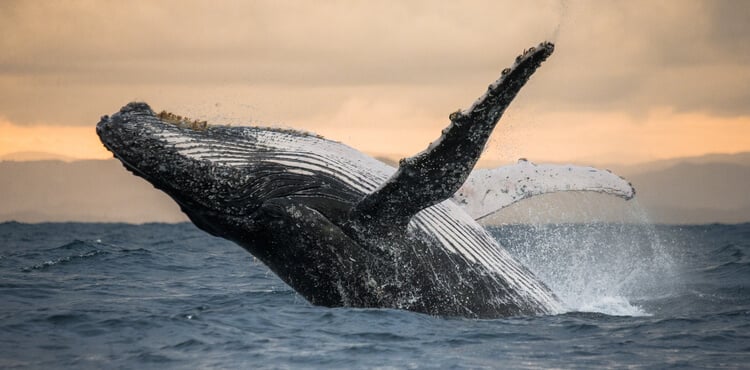
Book your nature vacation with Top Villas
Here at Top Villas, we pride ourselves in our range of beautiful vacation homes. From Florida to France, California to Croatia, we have exquisite luxury villas around the globe. Booking is easy. Simply find your perfect vacation rental, then book using our website. If you have any questions or queries, take a look at our Help Center, or contact our brilliant team.

